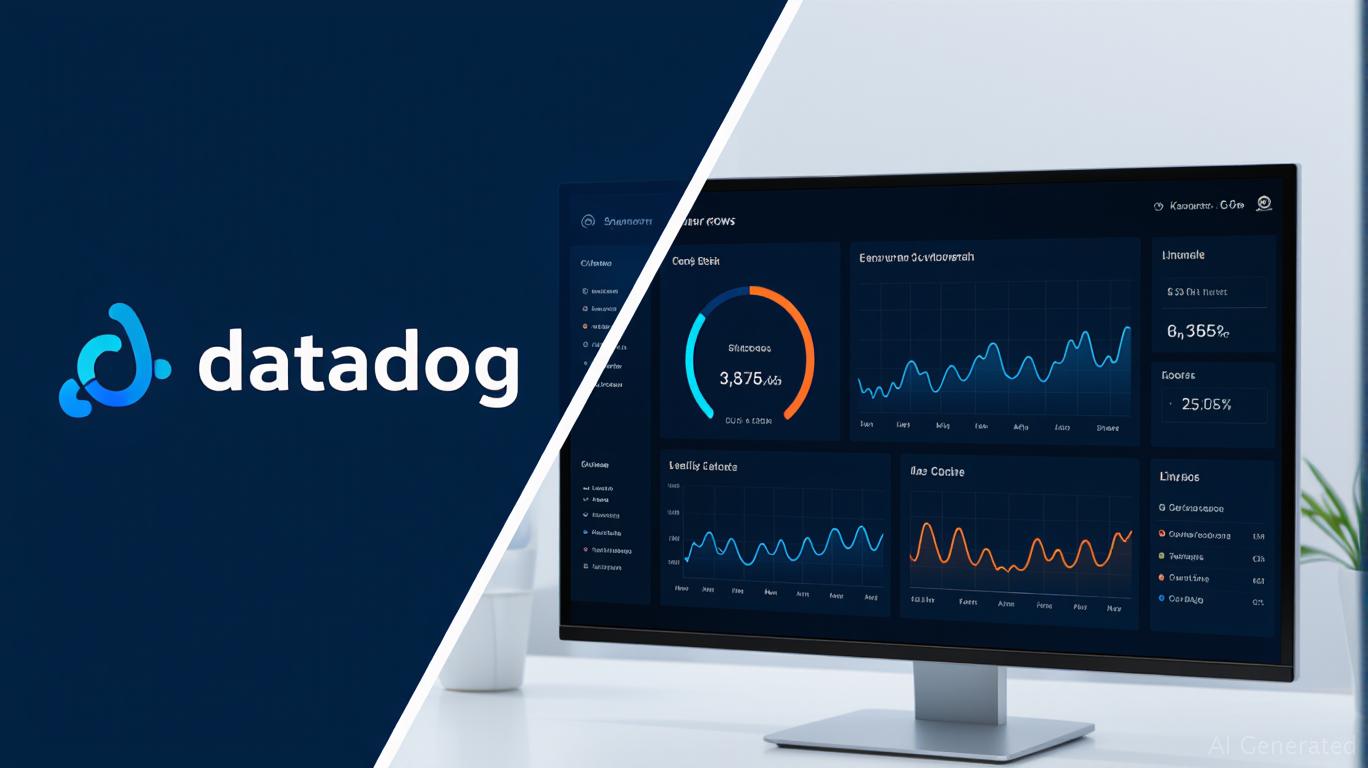Datadog's S&P 500 Inclusion: A Beacon for Cloud and AI-Driven Tech
On July 2, 2025, S&P Dow Jones Indices announced a pivotal shift in the tech sector:
(NASDAQ: DDOG) would join the S&P 500, replacing Juniper Networks (NYSE: JNPR), which was acquired by Enterprise (HPE) for $13.4 billion. This move marks a clear inflection point in the market's valuation of software companies. As Datadog's inclusion becomes effective on July 9, it signals a broader realignment toward cloud-native, AI-powered platforms—a trend that could redefine investment strategies for years to come.
The Index Effect: Immediate Catalysts for DDOG
The immediate impact of Datadog's S&P 500 inclusion is undeniable. The stock surged over 10% in extended trading on July 2, driven by the “index effect”—the influx of passive fund rebalancing. S&P 500 constituents attract roughly $5.1 trillion in assets under management, and the addition of Datadog, now a large-cap stock with a $46.6 billion market cap, will force index-tracking funds to buy shares. This creates a near-term tailwind for
, even as the company's fundamentals are the true long-term driver.Sector Consolidation: From Hardware to Software
Juniper's removal from the S&P 500 after its acquisition by
underscores a deeper trend: the decline of traditional networking hardware in favor of software-driven infrastructure. HPE's purchase of Juniper, paired with the divestiture of its Instant On business to meet antitrust requirements, reflects a broader industry shift. Investors are increasingly favoring scalable SaaS businesses like Datadog, which provide the tools to manage modern cloud architectures and AI workloads—a market HPE itself cannot address through Juniper's legacy products.Datadog's rise is no accident. The company has consistently expanded its lead in cloud observability, a category it helped define. Its Q1 2025 results—$761.6 million in revenue and $24.6 million in net income—demonstrate profitability at scale, while its $244 million in free cash flow highlights operational discipline. Strategic acquisitions like Eppo (for experimentation analytics) and Metaplane (for AI-driven observability) further cement its position in the next wave of enterprise software: AIOps.
The Long Game: Why Datadog Represents the Future
The S&P 500's decision to include Datadog validates its role as a critical infrastructure player in an increasingly cloud-first world. As enterprises migrate workloads to hybrid environments and adopt AI at scale, the need for real-time monitoring and automation becomes existential. Datadog's platform is already embedded in the operations of 85% of Fortune 500 companies, a testament to its network effects.
Critics might argue that Datadog's valuation is frothy, but the stock's price-to-sales ratio of 6.1x is in line with peers like
(6.7x) and New Relic (5.4x). More importantly, the company's gross margins (78% in Q1) and customer retention (net dollar retention of 124%) suggest sustainable growth. With AI adoption still in its early stages, Datadog's AIOps tools—such as automated root-cause analysis and predictive analytics—are positioned to capture a multi-billion-dollar opportunity.Investment Thesis: Buy the Transition
Datadog's inclusion in the S&P 500 is more than a symbolic win—it's a strategic call to action for investors. The immediate fund flows will provide support, but the true value lies in the secular tailwinds: enterprises will spend $440 billion on cloud infrastructure by 2026 (Gartner), and Datadog sits at the nexus of cost optimization and innovation. For investors aligned with the shift to scalable SaaS and AI-driven software, DDOG is a buy. The stock's current price of around $150 (as of July 7) offers a compelling entry point, with a 12-month price target of $180–$200 based on 2026 revenue expectations.
Risks to Consider
No investment is without risk. Competition from giants like AWS and Microsoft's Azure Monitor could intensify, and regulatory scrutiny of AI tools remains a wildcard. However, Datadog's developer-first focus and deep technical integration into customer workflows create high switching costs—a moat that even hyperscalers may struggle to breach.
Conclusion
The S&P 500's decision to replace Juniper with Datadog is a clarion call for tech investors: the era of hardware-driven networking is over. The future belongs to companies that enable the next generation of software-defined infrastructure—and Datadog is leading the charge. For investors seeking to capitalize on the shift to cloud and AI, DDOG is a cornerstone holding in a consolidating tech landscape. The index effect is just the beginning; the real payoff is in the decades ahead.
Sign up for free to continue reading
By continuing, I agree to the
Market Data Terms of Service and Privacy Statement

Comments
No comments yet